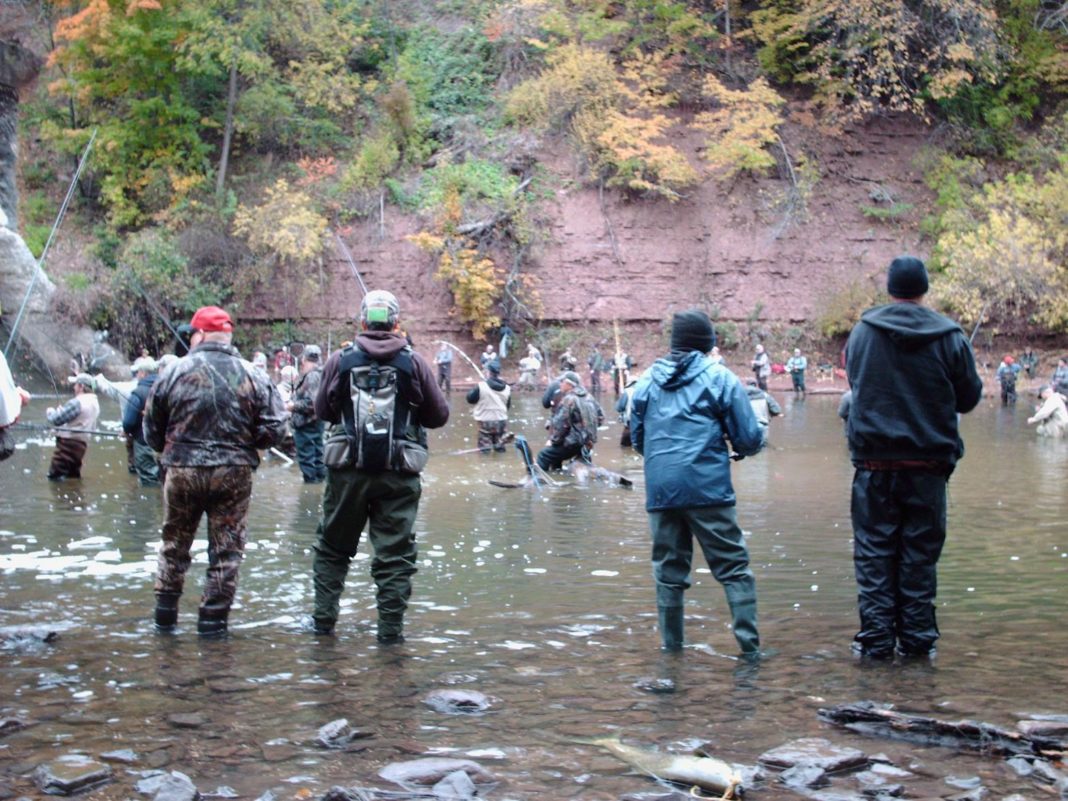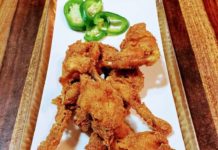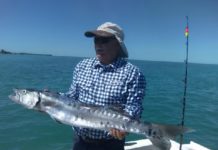It’s happened to all of us. You get up late. You forgot something and have to go back to get it. Traffic. Whatever it was, you arrive late to your spot, only to find it overrun with other anglers. What do you do? If you tell them this is your spot and please move, at best they’ll probably laugh in your face. At worst, you take a punch in the face…
It’s better to have a Plan B, find another spot, or figure out another way to make the most of your time on the water. In this article, top guides talk about what to do when you’re not the only one.
Maybe you get to the water late and find yourself working behind another angler—or anglers. Or maybe winter temps bump up to above freezing for the first time in weeks, sending everyone to your favorite steelhead river and forcing you to fish above and behind other sets of boats. In those circumstances where there’s no place else to go, there are still things you can do to help minimize the effects of fishing in others’ wakes—and putting yourself back in a position of advantage.
Steve Cornetet guides the upper Pere Marquette, which presents the double challenge of a busy waterway and wild, wary fish. ”I like to be either the first boat or the last,” Steve explains. ”Being the first has obvious advantages. You can move quickly, fishing the best holes, picking off active fish, staying ahead of the pack. But once that first boat passes me, that’s where I start fishing as slowly as possible. I fish fewer spots, but I fish them longer. And I don’t move on after I’ve caught a fish. I’ll hang around till I hook up with two or three.”
The streamer angler can also benefit from a modified game plan for those busy days on the water. At such times, finding the best fish can be less about “reading the river” conventionally and more about understanding the path that boats are likely to take through a given stretch of water—and where the fish in direct line of the traffic are likely to be pushed to. Fish will often be routed to low-tier holding lies that don’t have much to offer—save for respite from sloshing oars. These lies might not be a spot that would hold fish on a river empty of anglers. They may not align with your understanding of river hydraulics or even your sense of angling decorum. But on high-traffic days, they just might be where a big brown goes to get a little relief. Find them. Fish them.
Let’s turn our attention to the small stream wading angler. Charlie Piette has spent the past decade guiding on the technical spring creeks of Southwestern Wisconsin. His first bit of advice is to identify the secondary holding water—the “B” spots.
Photos: NJ Flyfishing (top), Meandering (above)



















![The Best Deer Camp Chili [VIDEO] Deer Chili Ingredients, Tomatoes, Chili Spices](/wp-content/uploads/2015/10/Deer-Chili-Deer-Camp-Recipe-218x150.jpg)
![How to Call Elk Early in the Season [VIDEO]](/wp-content/uploads/2016/08/byers003-218x150.jpg)







![Idiots Disturb Hunter: How Would You Have Handled It? [VIDEO]](/wp-content/uploads/2015/10/DSC00110-e1474487693878-100x70.jpg)
![Albino Buck Shocked to Shed His Antlers [VIDEO]](/wp-content/uploads/2015/10/AlbinoDeer-100x70.jpg)